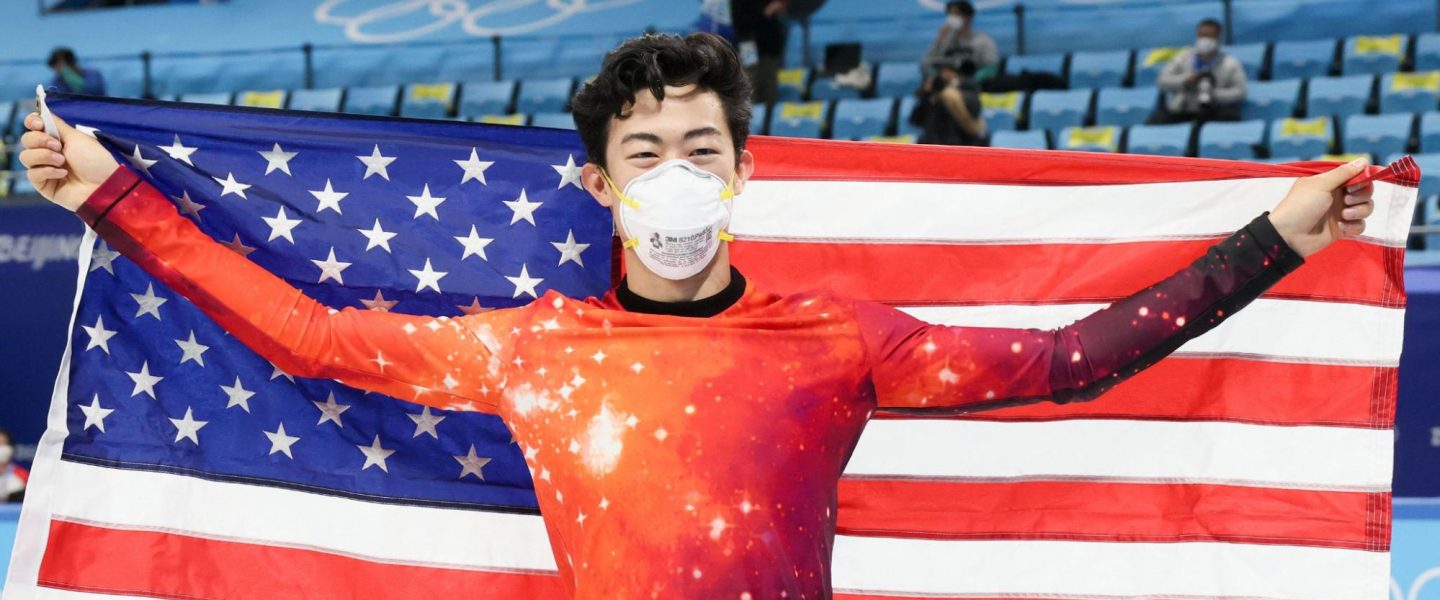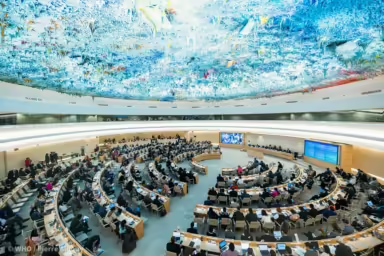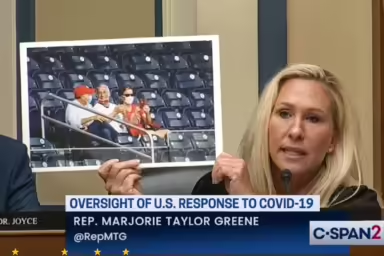Are you seeing what I’m seeing? States are dropping mask mandates, COVID-19 therapeutics are getting more political, and long COVID is becoming an even longer haul.
There was something chillingly surreal about watching Nathan Chen dance across the ice to win gold in figure skating at the 2022 Winter Olympics, then put on a mask as soon as he stepped off the rink. Like panning a camera from a Before COVID-19 (BC) scene into the After COVID-19 (AC) times, the 2022 Games reflect our shaky global search for the new normal.
This week brings updates on vaccine and booster research, the ever-changing roster of COVID-19 treatment options — including what drugs to consider after infection (looking at you, ivermectin) — and a look at how cities, schools, and communities are feeling about where we are in the pandemic. Buckle up, it’s a bit of a roller coaster ride.
The Many New Faces of COVID-19
We currently have thirteen COVID-19 variants that have been given Greek-letter names. Like pop stars, the names make frequent appearances in gossip and conversation. But what’s the deal with the variants we haven’t given pet names to? There are plenty of those to go around, including a subvariant of omicron, BA.2, that is apparently 1.5 times more contagious than the original, BA.1. Preliminary research shows that BA.2 may have transmission advantage over BA.1, but there’s so far been no indication of increased severity or immune evasion with the new variant.
However, specialists warn that just because omicron has appeared less severe than delta does not mean that the emerging coronavirus variants will follow that trend. In fact, omicron has shown us that variant dominance is based more on transmissibility than severity, two independent factors. There is no indication that the pandemic is anywhere near over, yet, and we have to be ready for future variants that may be more lethal.
Beyond BA.2, the virus is busily evolving around the world. An investigation of unexpected mutations found in New York City wastewater shows how little we know about where and how the virus is mutating. Researchers entertained theories ranging from undetected mutations occurring in remote or immunocompromised groups to various animal origins.

Pharmaceuti-killing It
On February 1st, at the request of the Food and Drug Administration (FDA), Pfizer applied for its two-dose vaccine to be approved for children under five years old. On the 11th, however, the administration postponed the discussion of authorization, declaring that more time and data were needed to support vaccinating this age group. The FDA’s decision echoes Pfizer and BioNTech’s own preexisting plan to test a three-dose vaccination sequence for children under five, in response to data that showed two doses had been insufficient for reaching the same levels of immune response as in older age groups.
Talk of nasal vaccines is hot on the heels of talk of increasing dosages. After months of tangoing with omicron, we are learning a few things:
- Three doses of mRNA vaccination aren’t enough to provide sustained immunity against the virus.
- Data collected on our current vaccines indicates that immunity wanes after four months.
- Nasally administered vaccines are better suited to combat respiratory illness.
About that last one: While researchers are on the hunt for variant-specific vaccines and more effective boosters to pick up the slack, the nasally administered option may be a standout. The nasal route would improve mucosal immunity, which could neutralize omicron starting in the nose. Ideally, this will prevent a coronavirus infection, not just serious illness. The nasal vaccines under development contain only the coronavirus spike protein and are intended to be better boosters for the mRNA vaccine than standalone vaccines. (Check out this neat tracker for more information on vaccine development.)
Vaccines aside, the FDA has issued another emergency-use authorization for a new monoclonal antibody, bebtelovimab, in adults and pediatric patients experiencing mild or moderate COVID-19 infections. Bebtelovimab has demonstrated activity against the omicron variant and its BA.2 subvariant. Although this decision increases the nation’s repertoire of omicron-neutralizing drugs, supplies have been scarce, and antibody treatments aren’t recommended for those with severe illness unless other options are unavailable, due to increased risk of adverse events.
What the FDA has explicitly not authorized, however, is the use of ivermectin for the treatment or prevention of COVID-19. Ivermectin, approved for use in humans to treat some parasitic conditions, has not been proven effective against the coronavirus. In addition, using it in large doses or with other medications may cause dangerous side effects, including death. And if you’re thinking of using your horse’s ivermectin prescription for your own COVID-19 infection, think again. Human use of ivermectin intended for animals — which has increased precipitously over the past year — may result in severe toxicity and overdoses.
The misinformation reached across the border to Mexico; last year, misguided government officials in Mexico City provided nearly 200,000 kits containing ivermectin to their constituents as a recommended COVID-19 medication. The government published a paper with their findings in a research forum where it became widely viewed, raising the hair of academics who compared its lack of ethics to the Tuskegee syphilis study.

Arrest and Unrest
As China builds a “bubble” for the Beijing Games and continues to enforce firm regulations on testing and isolation to prevent uncontrolled outbreaks, much of the US begins to lift mask mandates. Across schools, supermarkets, and cities — and at odds with continued masking recommendations from the Centers for Disease Control and Prevention (CDC) — officials see the drop in cases of omicron infection and hospitalization as an opportunity to return to normalcy. Most of the 11 states moving to partially or completely drop mask mandates lean Democratic and are making arguments for the comparative importance of vaccination over masking. However, as some experts have weighed in and as statistics continue to suggest, the decisions of states to drop mask mandates should be kept distinctly separate from those we make for individual safety.
The decision to drop mask mandates may be motivated by the states’ desires to boost economic affairs and public confidence. Every individual and given situation, however, calls for different health considerations and risk evaluations that leave embracing a maskless lifestyle pretty low on the to-do list.
Unsettling Gut Feelings
The plight of long COVID-19 patients worsens as new research indicates that blood vessel dysfunction, reminiscent of symptoms seen in chronic fatigue patients, may be physically preventing patients from exercising. “More exercise” is a common recommendation for long COVID-19 patients and healthy citizens alike, but where the latter may be able to persevere through setbacks, the same may not be possible for long COVID-19 patients who could experience fatigue, higher heart rates, pain, and vascular problems when they exercise. Physicians currently recommend that long COVID-19 patients adapt their exercise plans to more gradual increases and proceed cautiously.
A little good news, though, is that researchers have identified new risk factors for the development of long COVID-19, including asthma, unhealthy gut bacteria, the presence of autoantibodies, type 2 diabetes, Epstein-Barr virus, and more. These findings help physicians better predict who will develop long COVID-19 and adapt more existing treatments to relieve their symptoms.
Perspective, Purpose, Progress
Amid the seemingly endless bad news around our pandemic-stricken world, it’s easy to feel helpless, worn out, and crushed by stress. Many of us are spending more time online, locked in a whirlpool feedback loop of doomscrolling, or stuck at home without the ability to exercise or to access fresh air. At times like these, it’s helpful to think positively and remember the human capacity for “regeneration and recovery.” Even if it doesn’t feel like it at the moment, each small step forward has a big impact.



